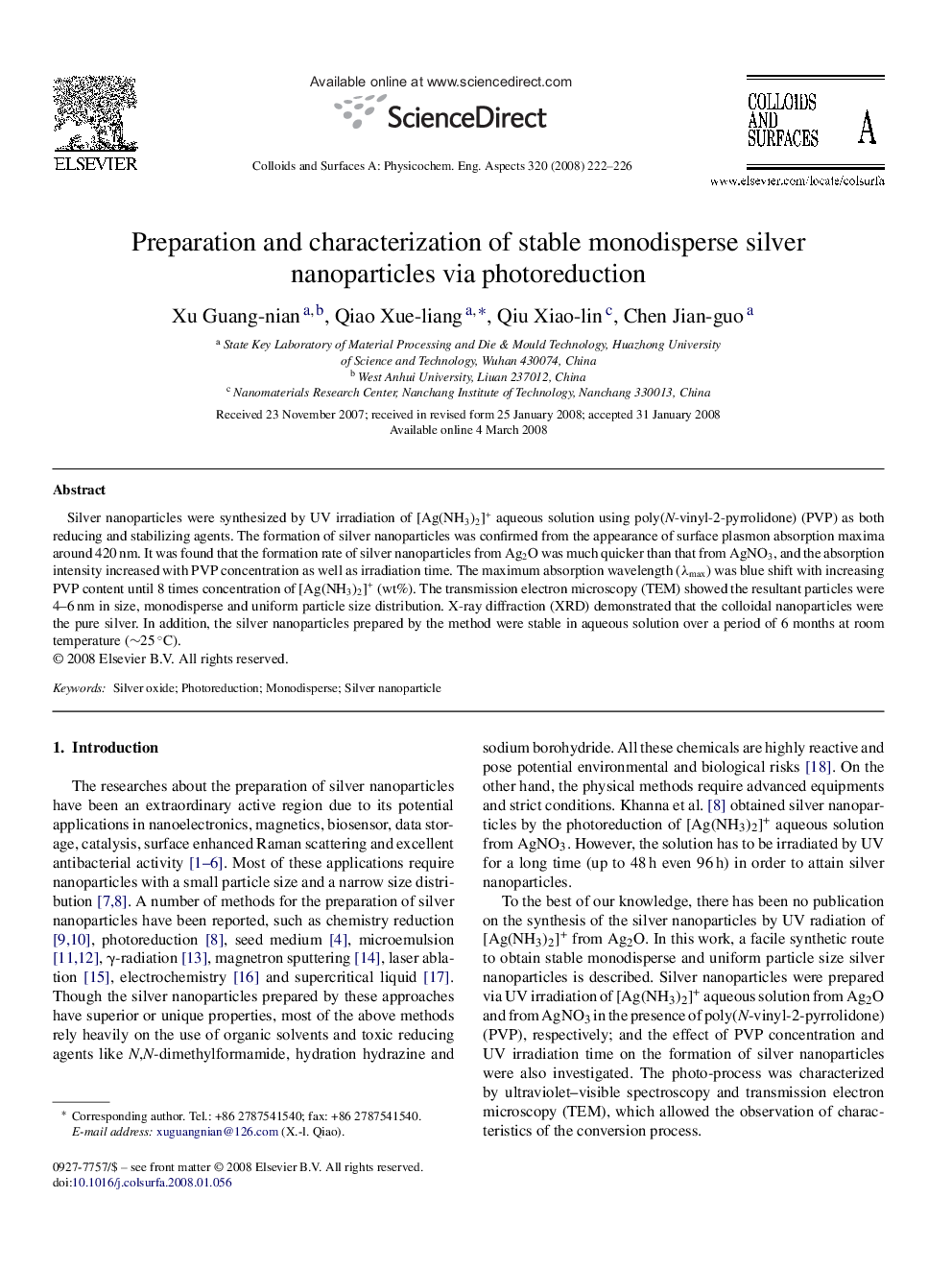| Article ID | Journal | Published Year | Pages | File Type |
|---|---|---|---|---|
| 596753 | Colloids and Surfaces A: Physicochemical and Engineering Aspects | 2008 | 5 Pages |
Silver nanoparticles were synthesized by UV irradiation of [Ag(NH3)2]+ aqueous solution using poly(N-vinyl-2-pyrrolidone) (PVP) as both reducing and stabilizing agents. The formation of silver nanoparticles was confirmed from the appearance of surface plasmon absorption maxima around 420 nm. It was found that the formation rate of silver nanoparticles from Ag2O was much quicker than that from AgNO3, and the absorption intensity increased with PVP concentration as well as irradiation time. The maximum absorption wavelength (λmax) was blue shift with increasing PVP content until 8 times concentration of [Ag(NH3)2]+ (wt%). The transmission electron microscopy (TEM) showed the resultant particles were 4–6 nm in size, monodisperse and uniform particle size distribution. X-ray diffraction (XRD) demonstrated that the colloidal nanoparticles were the pure silver. In addition, the silver nanoparticles prepared by the method were stable in aqueous solution over a period of 6 months at room temperature (∼25 °C).
